What is dry ice?
Dry ice is the solid form of Carbon Dioxide (CO2). CO2 is colorless, tasteless, odorless gas found naturally in our atmosphere.
What is dry ice blasting?
Dry ice blasting is similar to sand blasting, bead blasting, or soda blasting where a media is accelerated in a pressurized air stream (or other inert gas) to impact and clean a surface.
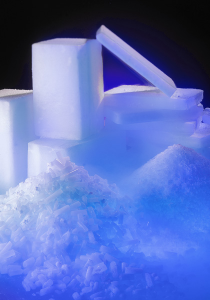
How does dry ice blasting work?
Unlike other types of blasting media that have a “chiseling” effect, dry ice blasting actually penetrates the contaminant utilizing kinetic energy from the high-velocity dry ice particles, creating an explosion upon striking the substrate and lifting the unwanted material from the surface. This non-abrasive process is commonly referred to as “impact flushing.”
Why would I use dry ice cleaning instead of traditional blasting media?
Positive reasons for incorporating dry ice processes are numerous. First, with government bans and regulations increasing on chemical cleaning, dry ice is an environmentally safe and effective alternative to current cleaning methods, approved even in the food industry. Also, you will increase revenue by lower disposal costs, not to mention the high-end expense savings from product replacement damage incurred over time by blasting with less friendly, abrasive media like sand, water, soda, walnut shell, bead, etc. In addition, most applicants can be cleaned on-line without disassembly, and without the worry of any grit entrapment or residue, freeing up hours of employee labor, ultimately saving your business countless time and money. So you may want to ask yourself… Why wouldn’t I use dry ice cleaning?

How long can I store dry ice?
We recommend that fresh dry ice be used within 3-5 business days. Properly insulated dry ice can be stored for periods over 10 days. However, the ice loses its’ integrity after extended periods of time, becoming soft and powder-like. This not only creates problems with inconsistent feeding of the blasting equipment (due to density loss), it may also exhibit unsatisfactory cleaning results.
What kind of safety equipment do I need?
For most applications: Ear plugs or muffs (or both), safety glasses, face shield, gloves, long sleeve shirt, long pants and safety shoes. For specialized cleaning jobs in confined spaces or no ventilation, a self-contained breathing apparatus, respirator, jumpsuit or special clothing may be required. Check your company’s safety policy and regulations for detailed specifications.
Does using more ice per minute speed up my removal rate?
Contrary to popular belief, more is NOT better when it comes to dry ice for the majority of applications. User experience and trial tests will determine exactly what you need to get the job done, and you’ll save a monetary bundle in the process.
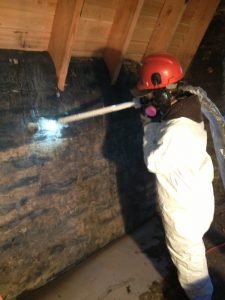
Does dry ice blasting freeze the contaminants?
No. This is a common misconception regarding the technology. Contaminants are not frozen in place, and then struck with a hammer to crack and fall to the floor. One should keep in mind that this is a cleaning (not freezing) process. The contaminate is penetrated and removed from the substrate being blasted.
What happens to the contaminate?
Contaminates can be dry, wet, hard or soft. Dry contaminates will break up into small chips and can be swept up or vacuumed. If the particles are large enough, they do not become airborne. If the contaminate is wet, such as grease or oils, the dry ice blasting will move or push the liquid away much like a high pressure water stream would, except that the surface where the contaminate was will be dry and clean. To prevent redeposition, the operator should work in a methodical way, from the top down.
Where do the contaminants go?
It moves from an undesirable location to an area where it can be dealt with more easily. If it is dry, it usually falls to the floor where it is swept away or vacuumed during normal maintenance. If it is a wet substance like grease, you take a methodical approach similar to hosing down a driveway. You start at one end and guide it to a collection point where it can be vacuumed or squeegeed up.
Do the contaminated or dry ice pellets ricochet?
Upon impact, dry ice pellets sublimate to a gaseous state and therefore dry ice particles typically do not ricochet. The removed contaminant is usually washed away by the blast jet stream and does not come directly back into the blast gun’s vicinity; however, safety glasses must be worn at all times during operation of the machine.
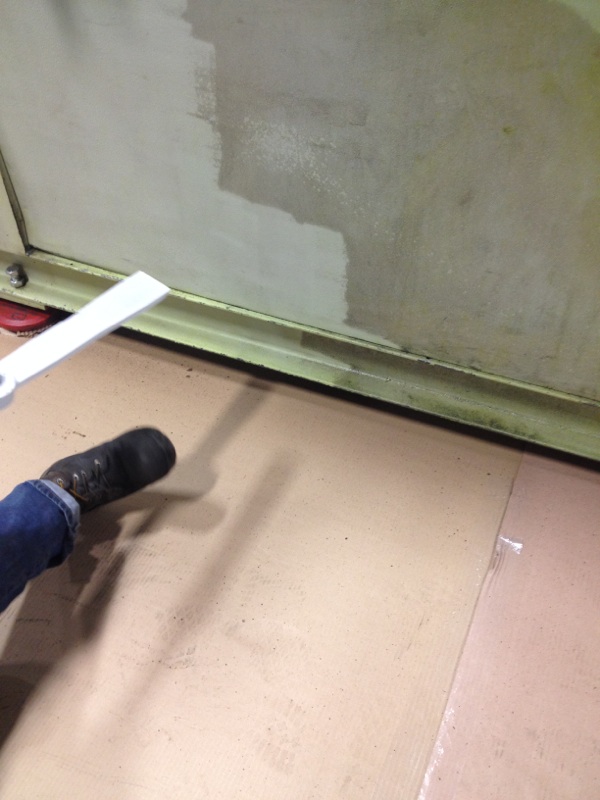
Can you use dry ice blasting to clean hot tools online?
Yes, in fact, dry ice blasting cleans faster when the substrate is hot.
Does dry ice blasting cool the substrate?
Yes, but not dramatically. The amount of cooling depends on the substrate material, the dwell time of the dry ice blast stream, and the dry ice usage. For example, a 30 inch (76.2 cm) by 30 inch (76.2 cm) rubber mold may have an initial temperature of 325°F (162.8°C). After the tool has been blasted clean (approximately 12 minutes), the temperature of the mold is about 300°F (148.9°C).
Will the temperature drop damage the hot mold?
Generally, no. The temperature change of the surface being cleaned is small and the corresponding tensile stress will be well below the point of what most molds will encounter during normal heat treatment.
Will dry ice cleaning damage the substrate?
Typically, no. Dry ice cleaning is a non-abrasive process. It will not etch or profile any substrate that is “harder” than the ice itself. With softer surfaces such as wood, drywall, soft plastic, etc., damage can sometimes occur if the parameters on the machine are set incorrectly (i.e. blast pressure set too high, ice rate too high, wrong nozzle choice).
Does dry ice cleaning cool the substrate?
Yes, but generally not as much as you might think. The amount of cooling depends upon three main factors.
- mass of the targeted surface
- dwell time
- ice usage rate
Normally, however, cooling is not a cause for concern. The decreases are minimal, with most substrates reaching ambient temperature in a matter of minutes after cleaning is completed.
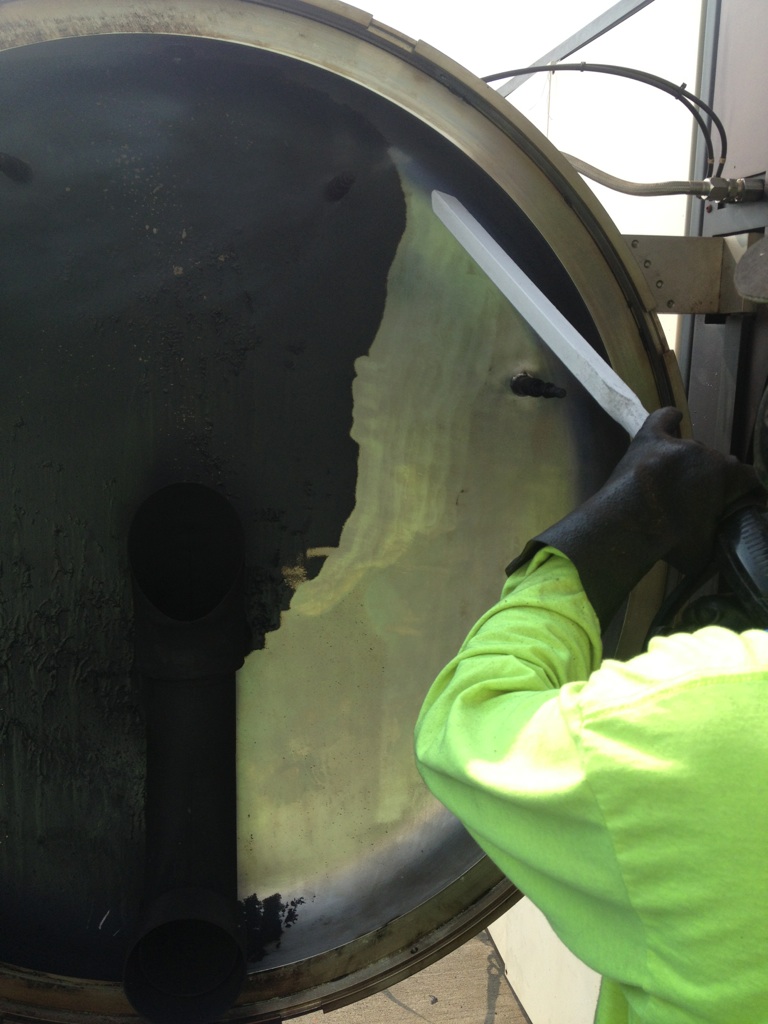
Will the process create condensation?
Condensation occurs when the temperature of the substrate falls below the dew point. The dew point varies with climate and the daily weather patterns. When cleaning hot substrates, condensation will rarely occur because the temperature of the surface will stay above the dew point. If condensation does form, you can control it by using heaters, heat lamps, or blow off devices.
Is it okay to blast in an enclosed area?
Yes, with proper ventilation. Because CO2 is 40% heavier than air, placement of exhaust vents at or near ground level is recommended when blasting in an enclosed area. In an open environment, existing ventilation is sufficient to prevent undue CO2 buildup. Even though CO2 is non-poisonous, it does displace oxygen in the atmosphere.
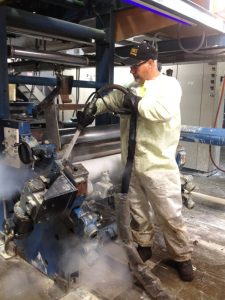
Proudly Serving:
Philadelphia | Reading | Allentown | Easton | Bethlehem | Wilkes-Barre | Scranton | Harrisburg | Lancaster | York | Lebanon | Hershey | Berwick | Hazleton | Bloomsburg | Lewisburg | Williamsport | Hershey | Pottsville

